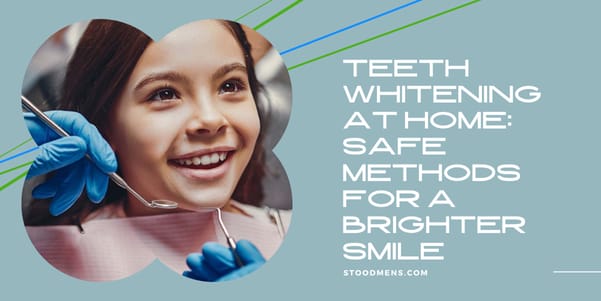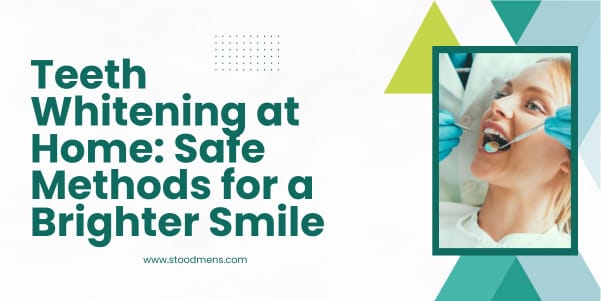
Introduction
Maintaining a bright and healthy smile is a vital aspect of oral hygiene with benefits that go beyond aesthetics. Teeth whitening, a key element of dental care, not only enhances one’s appearance but also boosts self-confidence and supports overall oral health. Discoloration and stains often indicate enamel erosion, lifestyle choices, or dietary habits. Addressing these through whitening can inspire better dental practices, while regular dental care prevents issues like cavities, gum disease, and enamel wear, ensuring the longevity of dental restorations, including fillings like gold teeth.
The Appeal of At-Home Whitening Methods
At-home teeth whitening has gained popularity as a convenient and cost-effective way to achieve a brighter smile without frequent dental visits. Whitening strips, kits, and LED treatments offer flexibility and ease of use. However, it’s important to select quality products and recognize that results may vary, especially with dental restorations like gold fillings. Combining at-home whitening with professional guidance ensures optimal outcomes and protects your dental health.
Understanding Teeth Whitening
What is Teeth Whitening?
Teeth whitening is a cosmetic dental process designed to remove stains and lighten tooth color. It can be performed professionally by dentists or through various at-home products. By targeting stains on the enamel and dentin, teeth whitening restores natural brightness, creating a radiant smile. Options range from in-office treatments to whitening kits and strips, offering diverse solutions for those seeking a quick, effective smile upgrade.
Common Causes of Teeth Discoloration
Discoloration occurs due to factors such as coffee, tea, red wine, tobacco, poor oral hygiene, aging, medications, and genetics. Over time, enamel erosion exposes dentin, which naturally has a darker tone, adding to the yellow or gray appearance of teeth. These concerns often drive people to explore whitening solutions.
Importance of Dental Care for a Bright Smile
Maintaining a bright smile requires more than whitening alone. Regular brushing, flossing, and professional cleanings remove plaque and protect against discoloration. A balanced diet, reduced intake of staining foods, and good oral hygiene habits are essential for long-term results, especially for preserving dental restorations.

Popular At-Home Teeth Whitening Methods
1. Baking Soda and Lemon Juice
This DIY method combines baking soda’s mild abrasiveness with the acidic properties of lemon juice to remove surface stains.
Safety Tips: Limit use to once a week and rinse thoroughly to avoid enamel damage caused by acidity.
2. Activated Charcoal
Activated charcoal absorbs impurities and surface stains.
How to Use: Gently brush teeth with charcoal powder for two minutes and rinse thoroughly. Limit usage to a few times per week to prevent enamel damage.
3. Hydrogen Peroxide Rinses
Diluted hydrogen peroxide is effective for breaking down stains.
Precautions: Use a 3% solution diluted with water and rinse a few times per week. Avoid overuse to prevent gum irritation or sensitivity.
The Role of Dental Hygiene in Teeth Whitening
Daily Dental Care Tips
Brushing twice daily with whitening toothpaste and rinsing after consuming stain-prone foods like coffee or wine help maintain a bright smile. Use a soft-bristled toothbrush to avoid damaging enamel.
Best Practices for Brushing and Flossing
Brush gently in circular motions for two minutes and floss daily to remove plaque between teeth. Consider an electric toothbrush with a whitening mode for added benefits.
Regular Dental Check-Ups
Professional cleanings remove tartar and deep stains that at-home care may miss. Regular check-ups also ensure early detection of potential oral health issues, maintaining both the brightness and health of your teeth.
Best Practices for Using Teeth Whitening Products
Choosing Safe and Effective Products
Opt for products approved by dental associations for safety and effectiveness. Consider sensitivity levels when selecting whitening agents, and consult your dentist if you have existing dental work.
Incorporating Whitening into Your Routine
Gradual whitening with toothpaste, occasional use of whitening strips, and rinsing after consuming staining foods can maintain brightness. Avoid harsh methods that could harm enamel.
Affordable Dental Care Options
Budget-Friendly Whitening Products
Affordable options like whitening toothpaste, strips, or DIY methods (baking soda paste or activated charcoal) can brighten teeth effectively. However, moderation and proper usage are essential to protect enamel.
Investing in Professional Care
While budget-friendly products are helpful, professional cleanings and quality dental care products offer better results and safeguard oral health. Investing in dental care ensures lasting benefits for both health and confidence.

Kids and Teeth Whitening
Safe Practices for Children
Ensure kids brush twice daily with fluoride toothpaste and floss regularly. Supervise brushing for younger children and encourage a diet rich in fruits and vegetables for natural oral health benefits.
Natural Whitening for Kids
Use gentle methods like baking soda paste or encourage eating crunchy fruits like apples for natural stain removal. Hydration and good dental hygiene are the safest ways to maintain their bright smiles.
Conclusion
Achieving a bright smile at home is safe and effective with proper Teeth & Dental Care methods like baking soda, activated charcoal, and hydrogen peroxide rinses. Always choose dentist-approved products and use them in moderation to avoid sensitivity or damage.
A comprehensive dental routine that includes regular brushing, flossing, and professional check-ups is essential for long-lasting results. Combine these practices with whitening treatments to maintain a dazzling, healthy smile for years to come.

